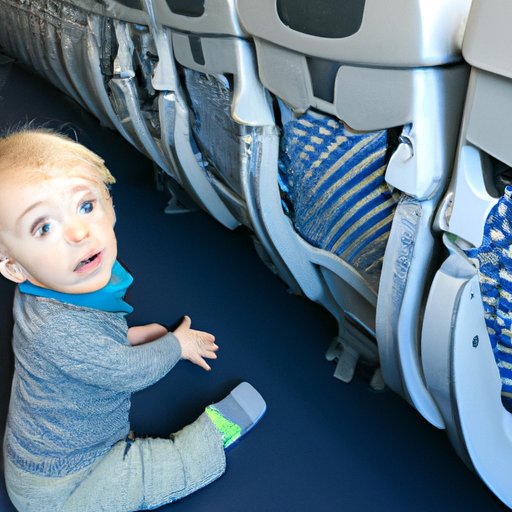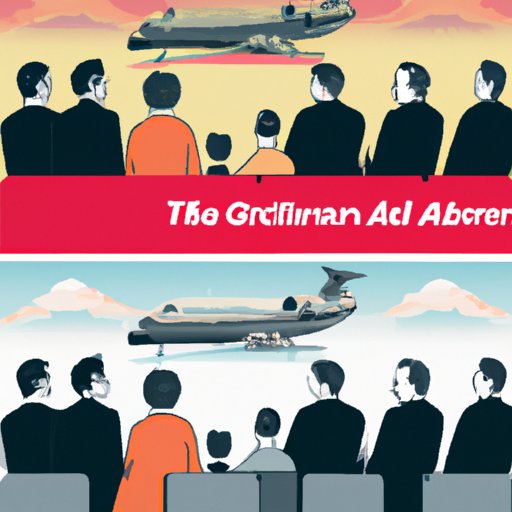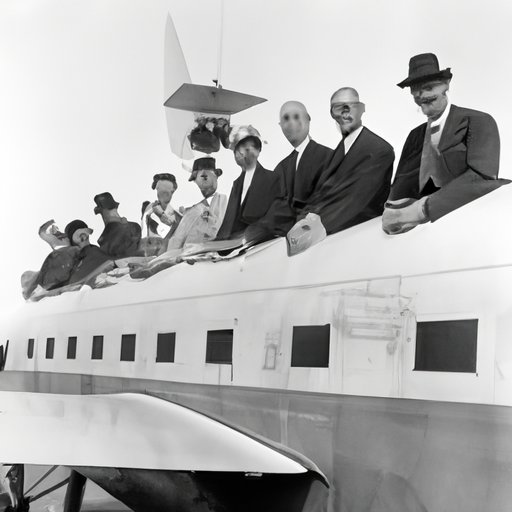Introduction
Airline travel is defined as the transportation of passengers or goods by air, usually on a scheduled basis. The concept of air travel has been around since the early days of mankind, but it was only in the 19th and 20th centuries that the technology and infrastructure needed for commercial airline travel began to emerge.
A Historical Overview of the Evolution of Airline Travel
The earliest form of air travel was the use of hot air balloons, which were first developed in the 18th century. However, these balloons were limited in their capacity to carry passengers or goods, and it wasn’t until the development of the airship in the late 19th century that more reliable forms of air travel became available.
The first successful powered airplane flight was made in 1903 by the Wright brothers, Wilbur and Orville. This breakthrough marked the beginning of the modern era of aviation, and it quickly sparked a wave of innovation and experimentation with aircraft design and engineering. By the early 1910s, the first commercial air services had begun to operate, offering scheduled flights between major cities.

Exploring the First Steps in Airline Travel
The earliest forms of commercial airline travel were largely unregulated, with few rules in place to ensure the safety of passengers. This changed in 1926 with the establishment of the International Commission for Air Navigation (ICAN). This organization established the first set of international standards for aircraft operation, including requirements for pilot licensing, maintenance, and navigation.
In the United States, the Civil Aeronautics Authority (CAA) was established in 1938 to regulate the safety and efficiency of commercial air travel. This organization eventually evolved into the Federal Aviation Administration (FAA), which remains the primary regulatory body for civil aviation in the US today.
Examining the Role of Technology in Airline Travel
Advances in aircraft design and engineering have played a major role in the development of airline travel. In the early days of aviation, aircraft were relatively slow and unreliable, making long-distance travel impractical. In the 1950s, however, jet engines revolutionized the industry, allowing aircraft to fly faster and farther than ever before.
At the same time, advances in navigation technology allowed pilots to navigate more accurately, reducing the risk of accidents and delays. Aircraft also became more efficient, with improved aerodynamics and fuel management systems allowing them to fly further on less fuel.

How Airline Travel has Changed Over Time
In recent decades, airline travel has become increasingly efficient and safe. This is due in large part to advances in technology, including the development of automated systems for aircraft operation and navigation. At the same time, the emergence of low-cost carriers has made air travel more accessible to a larger number of people.
These carriers have enabled more people to experience the benefits of air travel, such as greater convenience and shorter journey times. In addition, the increased competition from low-cost carriers has forced traditional airlines to offer more competitive fares, which has resulted in lower prices for consumers.

A Look at the Early Pioneers of Airline Travel
The history of airline travel is full of incredible stories of daring aviation pioneers who pushed the boundaries of what was possible. Some of the most famous names include Charles Lindbergh, Amelia Earhart, and Howard Hughes. These individuals helped shape the development of modern aviation and made countless contributions to the safety and efficiency of air travel.
In addition to these famous figures, there are many other notable companies that have played an important role in the history of airline travel. These include Pan American World Airways, which operated the world’s first transatlantic passenger service in 1939; British Airways, which launched the world’s first supersonic passenger service in 1976; and Southwest Airlines, which pioneered the concept of low-cost air travel in 1971.
Conclusion
Airline travel has come a long way since its earliest beginnings. From the development of the first powered aircraft to the emergence of low-cost carriers, the history of airline travel is filled with stories of technological innovation and pioneering individuals. Today, airline travel is safer and more efficient than ever before, and it continues to provide millions of people with access to the world.
(Note: Is this article not meeting your expectations? Do you have knowledge or insights to share? Unlock new opportunities and expand your reach by joining our authors team. Click Registration to join us and share your expertise with our readers.)
